The Alliance for Health Policy** hosted a summit in Washington D.C. in early November to discuss the future of healthcare delivery and the role that the healthcare workforce will play in that delivery. The panel of experts discussed that healthcare is at a crossroads because of the “silver tsunami” of baby boomers who are aging and will need more services in the future. According to Leading Age, the population of those age 65 and older will increase from 47.8 million in 2015 to 88 million in 2050.
With the silver tsunami coming there is a concern that the U.S. will not have enough physicians to meet the demand and that demand is growing faster than the supply of physicians. The Association of American Medical Colleges (a not-for-profit dedicated to transforming health care through innovative medical education, cutting-edge patient care, and groundbreaking medical research) is projecting a total physician shortfall between 40,800 and 104,900 physicians by 2030. In primary care alone, the shortfall is between 7,300 and 43,100 physicians by 2030.
Polly Pittman, professor of health policy and management at George Washington University, shared her research that primary care is getting delivered with fewer physicians relative to other care delivery providers such as nurse practitioners. From 2007 to 2013, the growth of physicians has been a low 34% versus 74% growth of nurse practitioners/physician assistants. Pittman said that at hospitals, from 2010 to 2014, providers increasingly substituted high- and middle-skilled clinical non-licensed personnel with lower skilled staff.
In addition to supply-and-demand concerns Pittman and a panel discussed delivery system reform and its effects on healthcare workers with a big focus on technology, team-based care and physician burnout. Panel member, Dr. Tom Jenike, chief human experience officer at Novant Health, stated that the EHR has been one of the biggest shifts in the industry, but that it isn’t going anywhere. He believes the way discussions were framed in the “Meaningful Use days” skipped over how the tool would change the day-to-day workflow for everyone on a clinical team. He believes that since 2009, EHRs have been shown to contribute to documentation overload and physician burnout.
Another panel member, Robert McNellis, senior advisor for primary care at the Agency for Healthcare Research and Quality (AHRQ), agreed EHRs have been a “thorny issue” for clinicians, but added when efforts go into retrofitting a tool for a practice, EHRs can work very well for practices. Unfortunately, this takes time and effort rather than the desired plug-and-play approach to implementing an EHR. He added EHRs have been beneficial for patients for things like video visits and online scheduling.
Ann Greiner, president and CEO of the Patient-Centered Primary Care Collaborative, noted there are bright spots with the promise of technology care integration, but stated the large amount of change that comes with moving to value (reporting requirements, redesigning a practice, etc.) is stressful and equates to less time spent with patients.
The panelists on delivery reform and its effects on the healthcare workforce concluded that EHRs have contributed to physician burnout but when configured properly they can generate insight to help patient outcomes. Also, the panel concurred that quality improvement and leadership needs to be taught in today’s medical curriculum to keep up with current care delivery team expectations.
**The Alliance for Health Policy, formerly the Alliance for Health Reform, is a nonpartisan, not-for-profit organization dedicated to helping policymakers understand the foundations of health policy, the roots of the nation’s health care issues, and the trade-offs posed by various proposals for change.

